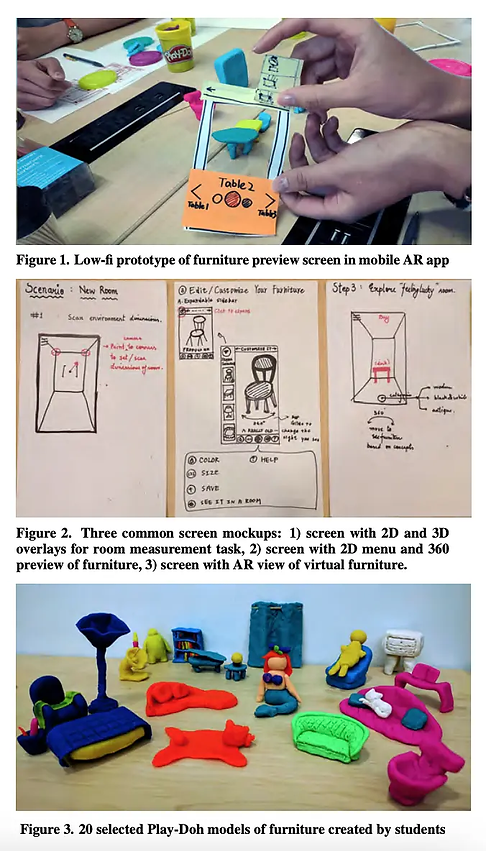On the basis of learning UI/UX design, I also learned some user experience design methods about AR/VR/MR/XR through online courses.


The XR design process is composed of a series of design and development tasks that are required to produce effective XR interface designs. While even there are a lot of commonalities between a user-centered design approach and more traditional interaction design tasks, there still some differences are. For example, not everything is about the user. When designing for XR, the environment plays a really important role. And that role actually changes depending on whether you are designing for AR, where the environment is given and your experience has to blend in, or VR, where you as the designer are actually creating the user's environment.

Below are some interesting points I have learned during my studies and the parts that should be paid attention to when doing design.
-
When doing lo-fi AR, you can't just draw on paper like a 2D design because people will automatically ignore the obstacles in moving, finally finding that plasticine is a simple and effective method.

2. When making VR Lo-fi, you can use 2D drawings and 360 photos of different layers to do the primary scene design.
Resource:http://michael-nebeling.de/publications/chi19a.pdf


3. In The research, almost no heuristic evaluations suggest a need for heuristics and metrics to help assess the MR user experience. While research on the web, mobile, tabletop, and Kinect-based interfaces has contributed to building a better understanding of how to measure and improve the user experience, what constitutes a good MR experience and how to measure it is still an open research question.
MRATpresents concepts and techniques designed to support usability evaluations of MR apps through plug-in-like instrumentation of the apps in Unity, the use of virtual or physical markers to define user tasks, and a set of heuristics and metrics that can feed visualizations for analysis.

